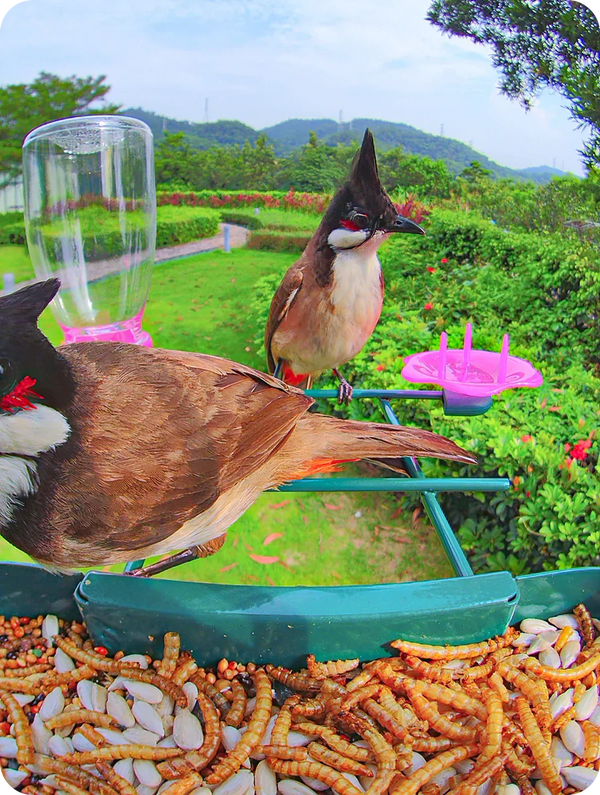Unlock the Secrets of Bird Feeders: Discover the Joy of Attracting Nature to Your Backyard!
Bird feeders are wonderful tools that invite a variety of avian friends into your garden, turning your backyard into a vibrant hub of activity. The simple act of placing a feeder can transform your outdoor space into a thriving ecosystem, allowing you to witness the beauty of nature up close. The joys of birdwatching extend beyond mere observation; they foster a connection with the environment, bringing peace and tranquility to our busy lives. Whether you're a seasoned birdwatcher or just starting, this article aims to explore the different types of bird feeders and their unique advantages, helping you enhance your backyard experience and attract a delightful array of birds.

Understanding Bird Feeders
Bird feeders serve a fundamental purpose: to provide a reliable food source for various bird species, especially in urban areas where natural food sources can be scarce. By setting up a feeder, you can attract birds that might otherwise pass by your garden, offering them a safe haven and a meal. Understanding how bird feeders function can deepen your appreciation for these devices. Most feeders are designed to dispense seeds or suet, making it easier for birds to access food without the challenge of foraging in the wild. This is particularly important during harsh weather conditions when food is harder to come by. My friend Sarah, an avid birdwatcher, often shares her excitement over the different species that visit her backyard feeders, each bringing its unique charm and character.
Types of Bird Feeders
Bird feeders come in various designs, each tailored to attract specific types of birds and suited to different feeding preferences. The main categories include platform feeders, tube feeders, suet feeders, and hopper feeders. Each type has its distinctive features and functionalities, making them appealing for different bird species. For instance, platform feeders are open and allow for easy access, while tube feeders are designed to keep seeds dry and fresh. Understanding these feeders' designs can help you choose the right type for your backyard and the birds you wish to attract.
Platform Feeders
Platform feeders are simple, flat surfaces that can accommodate a variety of bird seeds. Their open design makes them incredibly versatile and easy to use. Birds such as sparrows, juncos, and cardinals are often seen enjoying the offerings from platform feeders. One of the best features of platform feeders is their ability to attract multiple birds at once, creating a lively scene in your yard. I vividly remember the first time I set up a platform feeder; within days, it was bustling with activity, and I was captivated by the colorful visitors.
Tube Feeders
Tube feeders consist of a vertical tube that dispenses seeds through small holes. They are particularly well-suited for smaller birds like finches and chickadees, as they can cling to the feeder while feeding. The enclosed design helps protect seeds from moisture and pests, ensuring that the food remains fresh for longer periods. An advantage of tube feeders is their ability to hold a significant amount of seed, reducing the frequency of refills. I’ve seen my neighbor fill her tube feeder, and within minutes, it was swarmed with vibrant goldfinches, a sight that never fails to brighten my day.
Suet Feeders
Suet feeders are specifically designed to hold suet cakes, which are high-energy food sources that attract insect-eating birds like woodpeckers, nuthatches, and even some warblers. These feeders typically have a mesh or cage-like structure that allows birds to cling and peck at the suet. Suet feeders are particularly beneficial during colder months when birds need extra energy to survive. I recall the joy of watching a woodpecker at my suet feeder last winter, its colorful plumage contrasting against the white snow.
Hopper Feeders
Hopper feeders are enclosed structures that hold seeds and dispense them through small openings at the bottom. They are designed to attract a wide variety of birds, including larger species like blue jays and cardinals. The enclosed design helps protect the seeds from rain and snow, keeping them dry and accessible. Hopper feeders are often a favorite among bird enthusiasts as they can accommodate different types of seeds, making them versatile. My friend Jake has a large hopper feeder in his backyard, and he often shares stories of the diverse flock that visits, including the occasional surprise appearance from a rare bird.
Benefits of Using Bird Feeders
The ecological benefits of bird feeders are vast, as they support local wildlife and promote biodiversity. By providing a reliable food source, feeders help sustain bird populations, especially during challenging seasons. Birdwatching can also have significant mental health benefits; spending time in nature can reduce stress, improve mood, and enhance overall well-being. Observing the antics of birds as they come and go from feeders offers a wonderful way to connect with the environment, fostering a sense of peace and mindfulness. Personally, I find that taking a few moments to watch the birds relaxes my mind after a busy day, reminding me of the beauty surrounding us. The simple pleasure of birdwatching has become a cherished part of my daily routine.
Creating Your Bird-Friendly Oasis
In summary, bird feeders are not just simple tools; they are gateways to a deeper connection with nature. By understanding the various types of bird feeders and their unique benefits, you can create a welcoming space that attracts a diverse array of bird species to your backyard. Whether you choose a platform, tube, suet, or hopper feeder, the joy of watching birds interact with your garden is a rewarding experience that can enhance your outdoor environment. So, why not explore the world of bird feeders and discover the beauty of attracting these feathered friends to your home? Embrace the opportunity to connect with nature and enjoy the wonderful sights and sounds that come with it.










commentaires